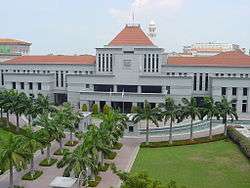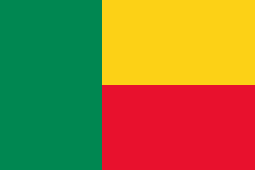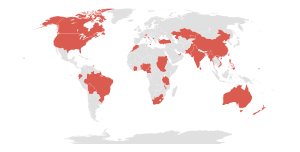Capital city

A capital city (or simply capital) is the municipality enjoying primary status in a country, state, province, or other region, usually as its seat of government. A capital is typically a city that physically encompasses the offices and meeting places of its respective government; the status as capital is often designated by its law or constitution. In some jurisdictions, including several countries, the different branches of government are located in different settlements. In some cases, a distinction is made between the official (constitutional) capital and the seat of government, which is in another place.
Terminology
The word capital derives from the Latin caput, meaning "head".
In several English-speaking states, the terms county town, county seat, and borough seat are also used in lower subdivisions. In unitary states, subnational capitals are commonly known as "administrative centres".
An alternative term is headtown. The capital is often, but not necessarily, the largest city of its constituent.
Origins


Historically, the major economic centre of a state or region often becomes the focal point of political power, and becomes a capital through conquest or federation. Examples are Ancient Babylon, Abbasid Baghdad, Ancient Athens, Rome, Constantinople, Chang'an, Ancient Cusco, Madrid, Paris, London, Moscow, Beijing, Tokyo, Vienna, and Berlin. The capital city naturally attracts politically motivated people and those whose skills are needed for efficient administration of national or imperial governments, such as lawyers, political scientists, bankers, journalists, and public policy makers. Some of these cities are or were also religious centres, e.g. Constantinople (more than one religion), Rome (the Roman Catholic Church), Jerusalem (more than one religion), Ancient Babylon, Moscow (the Russian Orthodox Church), Belgrade (the Serbian Orthodox Church), Paris, and Peking.
A capital city that is also the prime economic, cultural, or intellectual centre of a nation or an empire is sometimes referred to as a primate city. Examples are Accra, Athens, Belgrade, Bratislava, Brussels, Bucharest, Budapest, Buenos Aires, Bujumbura, Cairo, Copenhagen, Dublin, Kigali, Lima, Lisbon, London, Madrid, Manila, Montevideo, Mexico City, Nairobi, Paris, Prague, Riga, Santiago, Seoul, Skopje, Sofia, Stockholm, Tirana, Tokyo, Taipei, Ulaanbaatar, and Vienna.
The convergence of political and economic or cultural power is by no means universal. Traditional capitals may be economically eclipsed by provincial rivals, e.g. Nanking by Shanghai, Quebec City by Montreal, and numerous US state capitals. The decline of a dynasty or culture could also mean the extinction of its capital city, as occurred at Babylon and Cahokia.
Although many capitals are defined by constitution or legislation, many long-time capitals have no legal designation as such: for example Bern, Edinburgh, Lisbon, London, Paris, and Wellington. They are recognised as capitals as a matter of convention, and because all or almost all the country's central political institutions, such as government departments, supreme court, legislature, embassies, etc., are located in or near them.
Modern capitals

Counties in the United Kingdom have historic county towns, which are often not the largest settlement within the county and often are no longer administrative centres, as many historical counties are now only ceremonial, and administrative boundaries are different.
In Canada, there is a federal capital, while the ten provinces and three territories all have capital cities. The states of such countries as Mexico, Brazil (including the famous cities of Rio de Janeiro and São Paulo, capitals of their respective states), and Australia all have capital cities. For example, the six state capitals of Australia are Adelaide; Brisbane; Hobart; Melbourne; Perth; and Sydney. In Australia, the term "capital cities" is regularly used, to refer to the aforementioned state capitals plus the federal capital Canberra and Darwin, the capital of the Northern Territory. Abu Dhabi is the capital city of the Emirate of Abu Dhabi and the United Arab Emirates overall.
In unitary states which consist of multiple constituent countries, such as the United Kingdom or the Kingdom of Denmark, each country will usually have a capital city. Unlike in federations, there is usually not a separate national capital, but rather the capital city of one constituent country will also be the capital of the state overall, such as London, which is the capital of England and the United Kingdom. Similarly, each of the autonomous communities of Spain and regions of Italy has a capital city, such as Seville or Naples, while Madrid is the capital of the Community of Madrid and the Kingdom of Spain as a whole, while Rome is the capital of Italy and the region of Lazio.
In the Federal Republic of Germany, each of its constituent states (or Länder - plural of Land) has its own capital city, such as Dresden, Wiesbaden, Mainz, Düsseldorf, Stuttgart, and Munich, as do all of the republics of the Russian Federation. The national capitals of Germany and Russia: the Stadtstaat of Berlin and the Federal City of Moscow, are also constituent states of both countries in their own right. Each of the States of Austria and Cantons of Switzerland also have their own capital cities. Vienna, the national capital of Austria is also one of the states, while Bern is the capital of both Switzerland and the Canton of Bern.
Most, though certainly not all, national capitals are also the largest city in their respective countries.
Planned capital cities

Many capital cities were planned by government to house the seat of government of the nation or subdivision. Some planned capitals include La Plata, Buenos Aires Province, Argentina; Abuja, Nigeria (1991); Aracaju, Sergipe, Brazil (1855); Ankara, Turkey (1923); Austin, Texas, USA (1839); Belmopan, Belize (1970); Belo Horizonte, Minas Gerais, Brazil (1897); Bhubaneswar, Odisha, India (1948); Dhaka, Bangladesh (1971); Brasília, Brazil (1960); Canberra, Australia (1927); Chandigarh, Punjab and Haryana, India (1966); Gandhinagar, Gujarat, India (1960); Goiânia, Goiás, Brazil (1933); Indianapolis, Indiana, USA (1825); Islamabad, Pakistan (1960); Frankfort, Kentucky, USA (1792); Jefferson City, Missouri, USA (1821); Jhongsing New Village, Taiwan (1955); New Delhi, India (1911); Oklahoma City, Oklahoma, USA (1889); Ottawa, Ontario, Canada (1857); Palmas, Tocantins, Brazil (1989); Quezon City, Philippines (1948–76); Raleigh, North Carolina, USA (1792); Valletta, Malta (1571); Washington D.C., USA (1800); and Wellington, New Zealand (1865).
These cities satisfy one or both of the following criteria:
- A deliberately planned city that was built expressly to house the seat of government, superseding a capital city that was in an established population center. There have been various reasons for this, including overcrowding in that major metropolitan area, and the desire to place the capital city in a location with a better climate (usually a less tropical one).
- A town that was chosen as a compromise among two or more cities (or other political divisions), none of which was willing to concede to the other(s) the privilege of being the capital city. Usually, the new capital is geographically located roughly equidistant between the competing population centres.

Some examples of the second situation are:
- Canberra, Australia, which was chosen as a compromise located between Melbourne and Sydney.
- Frankfort, Kentucky, which is midway between Louisville and Lexington, Kentucky.
- Ottawa, Canada, which is located along the boundary between the Province of Ontario and the Province of Quebec – the two most populous of the ten provinces – midway between their respective provincial capitals, Toronto and Quebec City.
- Tallahassee, Florida, was chosen as the midpoint between Pensacola and St. Augustine, Florida - then the two largest cities in Florida.
- Wellington, New Zealand, which is located at the southern tip of the North Island of New Zealand, the more populous island, immediately across the Cook Strait from the South Island. The capital city was moved there from Auckland, which is much further north in the North Island, after a long argument for a more central location for parliament.[1]
Changes in a nation's political regime sometimes result in the designation of a new capital. The newly independent Kazakhstan moved its capital to the existing city of Aqmola. Naypyidaw was founded in Burma's interior as the former capital, Rangoon, was claimed to be too overcrowded.[2]
Unusual capital city arrangements



A number of cases exist where states have multiple capitals, and there are also several states that have no capital.
There is also a ghost town which currently serves as the de jure capital of a territory: Plymouth in Montserrat.
-
 Chile: Santiago is the capital even though the National Congress of Chile meets in Valparaíso.
Chile: Santiago is the capital even though the National Congress of Chile meets in Valparaíso. -
 Czech Republic: Prague is the sole constitutional capital. Brno is home to all three of the country's highest courts, making it the de facto capital of the Czech judicial branch.
Czech Republic: Prague is the sole constitutional capital. Brno is home to all three of the country's highest courts, making it the de facto capital of the Czech judicial branch. -
 Estonia: the Supreme Court and the Ministry of Education and Research are located in Tartu.
Estonia: the Supreme Court and the Ministry of Education and Research are located in Tartu. -
 Finland: During the summer, the President resides at the Kultaranta in Naantali; presidential sessions of the government are held there as well.
Finland: During the summer, the President resides at the Kultaranta in Naantali; presidential sessions of the government are held there as well. -
 France: The French constitution does not recognise any capital city in France. By law[3] Paris is the seat of both houses of Parliament (the National Assembly and the Senate), but their joint congresses are held at the Palace of Versailles. In case of emergency, the seat of the constitutional powers can be transferred in another town, in order for the Houses of Parliament to keep seating in the same location of the President and Cabinet.
France: The French constitution does not recognise any capital city in France. By law[3] Paris is the seat of both houses of Parliament (the National Assembly and the Senate), but their joint congresses are held at the Palace of Versailles. In case of emergency, the seat of the constitutional powers can be transferred in another town, in order for the Houses of Parliament to keep seating in the same location of the President and Cabinet. -
 Germany: The official capital Berlin is home to the parliament and the highest bodies of the executive branch (consisting of the ceremonial presidency and effective chancellery). Various ministries are located in the former West German capital of Bonn, which now has the title Federal City. The Federal Constitutional Court has its seat in Karlsruhe, which as a consequence is sometimes called Germany's "judicial capital"; none of Germany's highest judicial organs are located in Berlin.
Germany: The official capital Berlin is home to the parliament and the highest bodies of the executive branch (consisting of the ceremonial presidency and effective chancellery). Various ministries are located in the former West German capital of Bonn, which now has the title Federal City. The Federal Constitutional Court has its seat in Karlsruhe, which as a consequence is sometimes called Germany's "judicial capital"; none of Germany's highest judicial organs are located in Berlin. -
 Malaysia: Kuala Lumpur is the constitutional capital and seat of parliament, but the federal administrative centre and judiciary were moved 30 kilometres (19 mi) south to Putrajaya.
Malaysia: Kuala Lumpur is the constitutional capital and seat of parliament, but the federal administrative centre and judiciary were moved 30 kilometres (19 mi) south to Putrajaya. -
 Montenegro: The official capital Podgorica is home to the parliament and the executive, but the seat of the presidency is in the former royal capital of Cetinje.
Montenegro: The official capital Podgorica is home to the parliament and the executive, but the seat of the presidency is in the former royal capital of Cetinje. -
 Myanmar (Burma): Naypyidaw was designated the national capital in 2005, the same year it was founded, but most government offices and embassies are still located in Yangon (Rangoon).
Myanmar (Burma): Naypyidaw was designated the national capital in 2005, the same year it was founded, but most government offices and embassies are still located in Yangon (Rangoon). -
 Nauru: Nauru, a microstate of only 21 square kilometres (8.1 sq mi), has no distinct capital city, and thus has a capital district instead.
Nauru: Nauru, a microstate of only 21 square kilometres (8.1 sq mi), has no distinct capital city, and thus has a capital district instead. -
 Portugal: The Portuguese constitution has no reference to the capital. Although Lisbon is home to the parliament, the presidency, and the judicial power, no Portuguese official document states that Lisbon is the capital of Portugal.[4]
Portugal: The Portuguese constitution has no reference to the capital. Although Lisbon is home to the parliament, the presidency, and the judicial power, no Portuguese official document states that Lisbon is the capital of Portugal.[4] -
 Sri Lanka: Sri Jayawardenepura Kotte is the official capital and the location of the parliament, while the former capital, Colombo, is now designated as the "commercial capital". However, many government offices are still located in Colombo. Both cities are in the Colombo District.
Sri Lanka: Sri Jayawardenepura Kotte is the official capital and the location of the parliament, while the former capital, Colombo, is now designated as the "commercial capital". However, many government offices are still located in Colombo. Both cities are in the Colombo District. -
 South Africa: The administrative capital is Pretoria, the legislative capital is Cape Town, and the judicial capital is Bloemfontein. This is the outcome of the compromise that created the Union of South Africa in 1910.
South Africa: The administrative capital is Pretoria, the legislative capital is Cape Town, and the judicial capital is Bloemfontein. This is the outcome of the compromise that created the Union of South Africa in 1910. -
 Switzerland: Bern is the Federal City of Switzerland and functions as de facto capital. However, the Swiss Supreme Court is located in Lausanne.
Switzerland: Bern is the Federal City of Switzerland and functions as de facto capital. However, the Swiss Supreme Court is located in Lausanne. -
 Tanzania: Dodoma was designated the national capital in 1996, but most government offices and embassies are still located in Dar es Salaam.[5]
Tanzania: Dodoma was designated the national capital in 1996, but most government offices and embassies are still located in Dar es Salaam.[5] -
 Monaco,
Monaco,  Singapore, and the
Singapore, and the  Vatican City as well as the territories of
Vatican City as well as the territories of  Hong Kong and
Hong Kong and  Macau are city-states, and thus do not contain any distinct capital city as a whole. However, in Singapore's case, the main judiciary and legislative offices are located in the Downtown Core. Similarly, while Victoria was the capital of colonial Hong Kong, the district of Central serves as the seat of government offices today.
Macau are city-states, and thus do not contain any distinct capital city as a whole. However, in Singapore's case, the main judiciary and legislative offices are located in the Downtown Core. Similarly, while Victoria was the capital of colonial Hong Kong, the district of Central serves as the seat of government offices today. -
 Canary Islands (Spain): Until 1927 the capital of the Province of Canarias was Santa Cruz de Tenerife. When the Canary Islands became an autonomous community in 1982, Santa Cruz de Tenerife and Las Palmas de Gran Canaria were both given capital status.[6][7] There is currently a balance of institutions between the two capitals, in fact the Canary Islands is the only autonomous community in Spain which has two capitals.
Canary Islands (Spain): Until 1927 the capital of the Province of Canarias was Santa Cruz de Tenerife. When the Canary Islands became an autonomous community in 1982, Santa Cruz de Tenerife and Las Palmas de Gran Canaria were both given capital status.[6][7] There is currently a balance of institutions between the two capitals, in fact the Canary Islands is the only autonomous community in Spain which has two capitals.
Capitals that are not the seat of government
There are several countries where, for various reasons, the official capital and de facto seat of government are separated:
-
 Benin: Porto-Novo is the official capital, but Cotonou is the seat of government.
Benin: Porto-Novo is the official capital, but Cotonou is the seat of government. -
 Bolivia: Sucre is the constitutional capital, the supreme tribunal of justice is located in Sucre, making it the judicial capital. The palacio quemado, the national congress and national electoral court are located in La Paz, making it the seat of government.
Bolivia: Sucre is the constitutional capital, the supreme tribunal of justice is located in Sucre, making it the judicial capital. The palacio quemado, the national congress and national electoral court are located in La Paz, making it the seat of government. -
 Ivory Coast: Yamoussoukro was designated the national capital in 1983, but most government offices and embassies are still located in Abidjan.
Ivory Coast: Yamoussoukro was designated the national capital in 1983, but most government offices and embassies are still located in Abidjan. -
 Georgia: since 2012, the seat of government has been Kutaisi, but the President's residence and the Supreme Court remain in Tbilisi, the official capital.
Georgia: since 2012, the seat of government has been Kutaisi, but the President's residence and the Supreme Court remain in Tbilisi, the official capital. -
 Netherlands: Amsterdam is the constitutional national capital even though the Dutch government, the parliament, the supreme court, the Council of State, and the work palace of the King are all located in The Hague, as are all the embassies. (For more details see: Capital of the Netherlands.)
Netherlands: Amsterdam is the constitutional national capital even though the Dutch government, the parliament, the supreme court, the Council of State, and the work palace of the King are all located in The Hague, as are all the embassies. (For more details see: Capital of the Netherlands.) -
 Philippines: As provided by Presidential Decree No. 940 (June 24, 1976), Metropolitan Manila, as a whole, is the Philippines' seat of government while the City of Manila is the capital city.[8]
Philippines: As provided by Presidential Decree No. 940 (June 24, 1976), Metropolitan Manila, as a whole, is the Philippines' seat of government while the City of Manila is the capital city.[8]
Disputed capitals
-
 Israel and
Israel and  Palestine: Jerusalem is claimed as the capital of both Israel[9] and Palestine.[10] Israel's presidential residence, government offices, supreme court and parliament (Knesset) are located there, but the UN and most countries take the position that the final status of Jerusalem is unsettled pending future negotiations. Most countries maintain their diplomatic missions to Israel in Tel Aviv, while diplomatic missions to Palestine are in various places such as Ramallah, Gaza City, Cairo and Damascus.
Palestine: Jerusalem is claimed as the capital of both Israel[9] and Palestine.[10] Israel's presidential residence, government offices, supreme court and parliament (Knesset) are located there, but the UN and most countries take the position that the final status of Jerusalem is unsettled pending future negotiations. Most countries maintain their diplomatic missions to Israel in Tel Aviv, while diplomatic missions to Palestine are in various places such as Ramallah, Gaza City, Cairo and Damascus.
Intergovernmental organizations
- European Union (see details): Brussels is generally considered as the seat of the European Union, alongside Strasbourg where the European Parliament has its official seat and votes[11] because it hosts the major institutions of the EU. The judiciary and some of the executive's work are located in Luxembourg and other bodies and agencies in other cities. Although the main seats are fixed in the EU's treaties which form its legal basis, they do not use the term "capital" for any city.
- United Nations: New York City is the main meeting place of the highest bodies of the UN, but significant parts of its structure exist in other cities, notably Vienna, Geneva, Nairobi and The Hague.
- African Union: Addis Ababa and Midrand
- Arab League: Cairo
- Asian Development Bank: Manila
- Association of Southeast Asian Nations: Jakarta
- Commonwealth of Nations: London
- European Food Safety Authority: Parma
- European Organization for Nuclear Research: Meyrin, a suburb of Geneva
- Helsinki Commission: Helsinki
- International Organization for Standardization: Geneva
- Interpol: Lyon
- North Atlantic Treaty Organization: Brussels
- Organisation of Islamic Cooperation: Jeddah
- Organization of Ibero-American States: Madrid
- South Asian Association for Regional Cooperation: Kathmandu
- Union of South American Nations: Cochabamba and Quito
- World Bank: Washington, D.C.
- World Tourism Organization: Madrid
Capital as symbol
With the rise of modern empires and the nation-state, the capital city has become a symbol for the state and its government, and imbued with political meaning. Unlike medieval capitals, which were declared wherever a monarch held his or her court, the selection, relocation, founding, or capture of a modern capital city is an emotional event. For example:
- The ruined and almost uninhabited Athens was made capital of newly independent Greece in 1834, four years after the country gained its independence, with the romantic notion of reviving the glory of Ancient Greece. Similarly, following the Cold War and German reunification, Berlin is now once again the capital of Germany. Other restored capital cities include Moscow after the October Revolution.
- A symbolic relocation of a capital city to a geographically or demographically peripheral location may be for either economic or strategic reasons (sometimes known as a forward capital or spearhead capital). Peter I of Russia moved his government from Moscow to Saint Petersburg to give the Russian Empire a western orientation. The economically significant city of Nafplion became the first capital of Greece, when Athens was an unimportant village.. The Ming emperors moved their capital to Peking from the more central Nanking to help supervise the border with the Mongols. During the 1857 rebellion, Indian rebels considered Delhi their capital, and Bahadur Shah Zafar was proclaimed emperor, but the ruling British had their capital in Calcutta. In 1877, the British formally held a 'Durbar' in Delhi, proclaiming Queen Victoria as 'Empress of India'. Delhi finally became the colonial capital after the Coronation Durbar of King-Emperor George V in 1911, continuing as independent India's capital from 1947. Other examples include Abuja, Astana, Brasília, Helsinki, Islamabad, Naypyidaw and Yamoussoukro.
- The selection or founding of a "neutral" capital city, one unencumbered by regional or political identities, was meant to represent the unity of a new state when Ankara, Turkey; Bern, Switzerland; Canberra, Australia; Madrid; Ottawa; Washington, DC; and Wellington, New Zealand became capital cities. Sometimes, the location of a new capital city was chosen to terminate squabbling or possible squabbling between various entities, such as in the cases of Canberra, Ottawa, Washington, and Wellington.
- The British-built town of New Delhi represented a simultaneous break and continuity with the past, the location of Delhi being where many imperial capitals were built (Indraprastha, Dhillika, and Shahjahanabad) but the actual capital being the new British-built town designed by Edwin Lutyens. Wellington, on the southwestern tip of the North Island of New Zealand, replaced the much more northerly city of Auckland in to place the national capital close to the South Island and hence to placate its residents, many of whom sympathies with separatism.
- During the American Civil War, tremendous resources were expended to defend Washington, D.C., which actually bordered on the Confederate States of America (with the Commonwealth of Virginia), from Confederate attack even though the relatively small federal government could easily have been moved elsewhere. Likewise, great resources were expended by the Confederacy in defending the Confederate capital from attack by the Union, in its exposed location of Richmond, Virginia, barely 100 mi south of Washington.
Capitals in military strategy

The capital city is almost always a primary target in a war, as capturing it usually guarantees capture of much of the enemy government, victory for the attacking forces, or at the very least demoralization for the defeated forces.
In ancient China, where governments were massive centralized bureaucracies with little flexibility on the provincial level, a dynasty could easily be toppled with the fall of its capital. In the Three Kingdoms period, both Shu and Wu fell when their respective capitals of Chengdu and Jianye fell. The Ming dynasty relocated its capital from Nanjing to Beijing, where they could more effectively control the generals and troops guarding the borders from Mongols and Manchus. The Ming was destroyed when the Li Zicheng took their seat of power, and this pattern repeats itself in Chinese history, until the fall of the traditional Confucian monarchy in the 20th century. After the Qing Dynasty's collapse, decentralization of authority and improved transportation and communication technologies allowed both the Chinese Nationalists and Chinese Communists to rapidly relocate capitals and keep their leadership structures intact during the great crisis of Japanese invasion.
National capitals were arguably less important as military objectives in other parts of the world, including the West, because of socioeconomic trends toward localized authority, a strategic modus operandi especially popular after the development of feudalism and reaffirmed by the development of democratic and capitalistic philosophies. In 1204, after the Latin Crusaders captured the Byzantine capital, Constantinople, Byzantine forces were able to regroup in several provinces; provincial noblemen managed to reconquer the capital after 60 years and preserve the empire for another 200 years after that. The British forces sacked various American capitals repeatedly during the Revolutionary War and War of 1812, but American forces could still carry on fighting from the countryside, where they enjoyed support from local governments and the traditionally independent civilian frontiersmen. Exceptions to these generalizations include highly centralized states such as France, whose centralized bureaucracies could effectively coordinate far-flung resources, giving the state a powerful advantage over less coherent rivals, but risking utter ruin if the capital were taken. In their military strategies, traditional enemies of France such as Prussia (in the Franco-Prussian War of 1871) focused on the capture of Paris.
See also
- Capital region
- List of capital cities by altitude
- List of national capitals and largest cities by country
- List of capitals outside the territories they serve
- List of former national capitals
- List of national capitals in alphabetical order
- Temporary capital
References
| Wikimedia Commons has media related to Capitals. |
- ↑ Levine, Stephen (13 July 2012). "Capital city - A new capital". Te Ara: The Encyclopedia of New Zealand. Retrieved 4 May 2015.
- ↑ Pedrosa, Veronica (20 November 2006). "Burma's 'seat of the kings'". Al Jazeera. Archived from the original on 23 November 2006. Retrieved 21 November 2006.
- ↑ Ordonnance n° 58-1100 du 17 novembre 1958 relative au fonctionnement des assemblées parlementaires article 1
- ↑ "Lisboa não tem documento que a oficialize como capital de Portugal", Revista Port.com (in Portuguese), April 13, 2015, retrieved November 5, 2016
- ↑ CIA World Factbook - Tanzania https://www.cia.gov/library/publications/the-world-factbook/geos/tz.html
- ↑ Real Decreto de 30 de noviembre de 1833 en wikisource
- ↑ Real Decreto de 30 de noviembre de 1833 en el sitio web oficial del Gobierno de Canarias
- ↑ "Presidential Decree No. 940 : Philippine Laws, Statutes and Codes". Chan Robles Virtual Law Library. 1976-06-24. Retrieved 2014-04-20.
- ↑ See Jerusalem Law
- ↑ 2003 Basic Law of Palestine, Title One: Article 3
- ↑ Demey, Thierry (2007). Brussels, capital of Europe. S. Strange (trans.). Brussels: Badeaux. ISBN 2-9600414-2-9.
